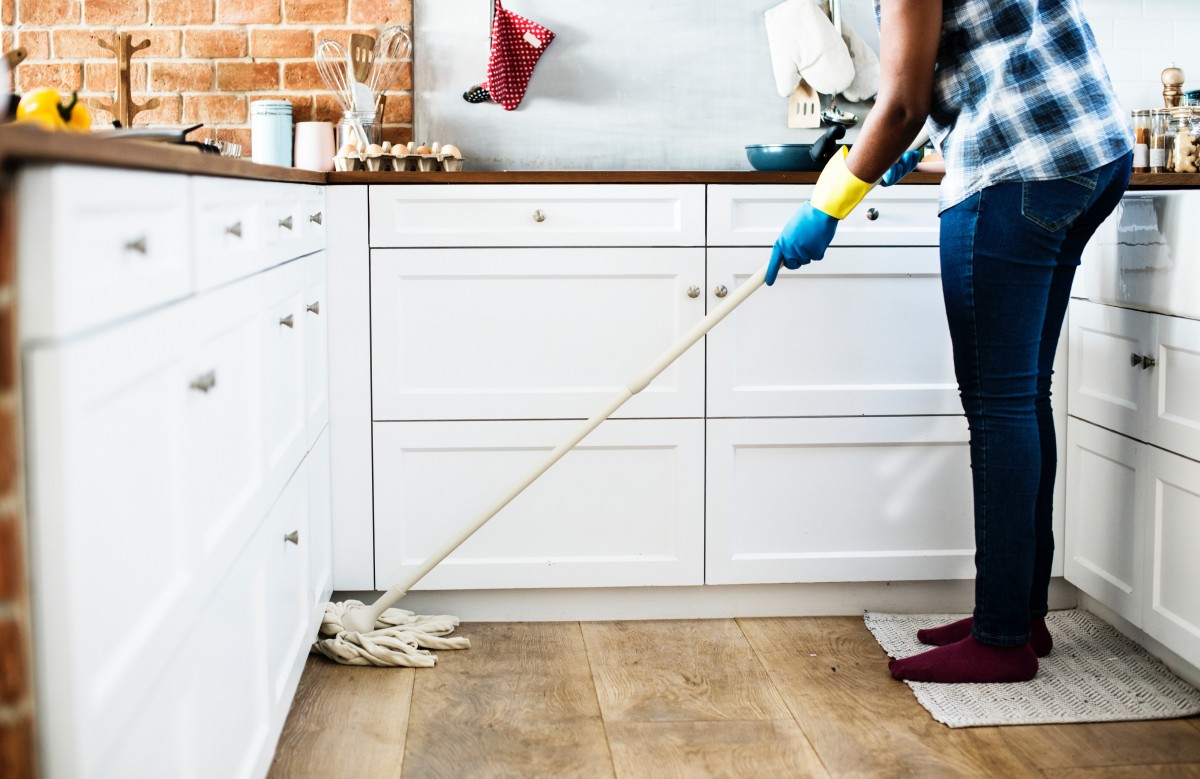Cleaning the oven may not be the most fun task in the house. It can also be a difficult one because the dirt burns off in the heat. But relax. Below, we explain why you should clean the oven, how often you should do it, and then we give you some simple tips that make cleaning the oven a little easier.
Why Clean the Oven?
The most important reason why you need to clean the oven is that burnt food residue and grease are a fire hazard. But what is burned also causes a lot of odors to spread through the house, and the smell can linger for a few days before it goes away. So get into the habit of always removing overcooked and leftover food as soon as the oven has cooled. Otherwise, they may burn and become even more difficult to remove later. With a properly cleaned oven, you can cook safely and securely.
Tip: Be proactive!
Place baking pans on a plate rather than directly on the grill. It’s so much easier to clean an oven tray of leftover food than the bottom of your oven! If you want, you can also put a sheet of parchment paper on top to make it even easier.
How Often Should You Clean Your Oven?
How often you should clean your oven depends on how often you use it. The important thing is to clean it regularly so that you can keep your oven clean and not have to do a very tiring job once you get the hang of it. A guideline to follow may be to clean the oven about every 3 to 6 months.
4 Tips for Cleaning the Oven
Here we present four tips that make oven cleaning both easy and effective. Test them out and see what works best for you and your oven, but remember to always check what type of cleaning is recommended for your particular oven. Perhaps your oven already has its own cleaning program that takes care of most of the work – information on cleaning is usually found in the product’s user manual. Our tips are:
1. Soap and Water
Soap is a natural and ecological product that effectively dissolves grease. Mix 2 deciliters of soap with 1 deciliter of water and spray the mixture on the inside of the oven. Close the door, set the oven to 100 degrees and let it sit for 15 to 20 minutes. Let the oven cool before wiping the interior with a damp cloth.
2. Lemon
Squeeze the juice from 2 lemons into a bowl or ovenproof pan. Bake at 250 degrees for 30 minutes. Let the oven cool before wiping with a damp microfiber cloth.
3. Oven Cleaner
If the oven is really dirty and encrusted, you may need to use an oven cleaner that is effective against dirt. Whichever cleaner you choose, it’s always a good idea to read the package carefully and follow the instructions. Remember to use gloves and protect the floor in front of the oven. It may also be a good idea to air out the kitchen after cleaning to get rid of fumes and odors.
4. Ovens with a Cleaning Program
There are also ovens that have built-in cleaning programs or cleaning functions. These programs can, for example, have a so-called pyrolytic cleaning or a catalytic cleaning.
Pyrolytic cleaning ovens: These ovens can withstand very high heat and heat up to 500 degrees. The dirt turns into ash which you can then wipe off with a cloth. Remember that it can take a long time for the oven to cool down properly. Read the instructions for your oven carefully before starting the cleaning program. Note that ovens with this feature should not be cleaned in any of the ways described above.
Catalytic Oven: Ovens with catalytic cleaning help prevent grease and dirt build-up. When the temperature reaches 250°C, the technology starts automatically and the oven cleans itself by burning off and removing grease and dirt. However, make sure that the bottom of the oven, where there is only smooth enamel, remains clean.
Steam ovens with steam cleaning program: Some steam ovens also have a steam cleaning function where, when the program is started, the oven cleans itself with steam. Start with a cold oven and fill the water box to the maximum level, then run the program. Finally, you can dry the oven with a soft cloth.
If you follow the tips above, cleaning the oven will be made easy and you will be able to do it in a jiffy. What kitchen item you find more challenging to clean and what’s your usual process? Let us know in the comments below.




